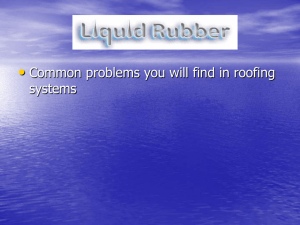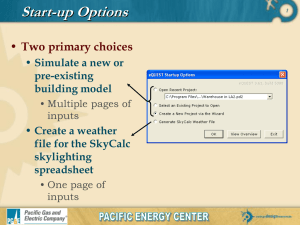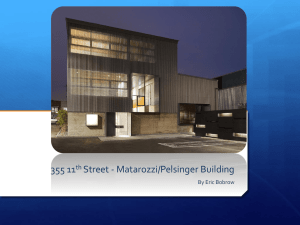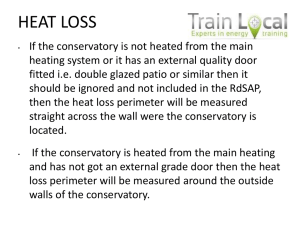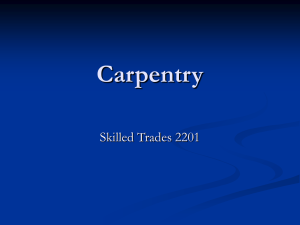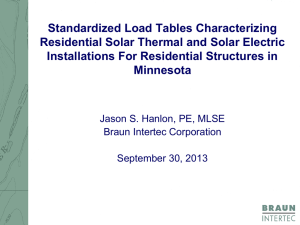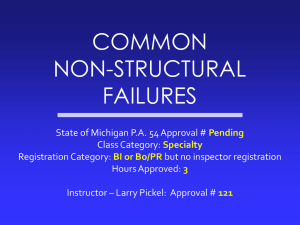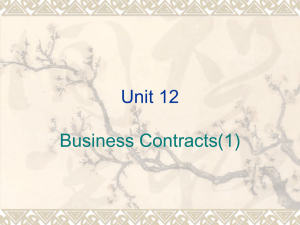CREATING THE NEXT GENERATION
advertisement
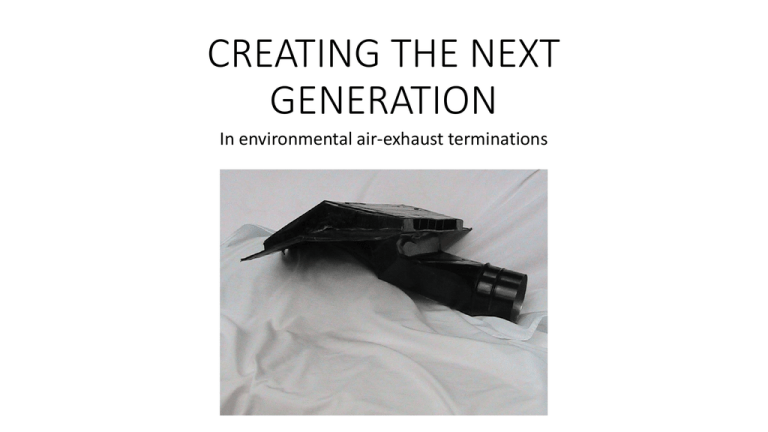
CREATING THE NEXT GENERATION In environmental air-exhaust terminations At The Ridge This air exhaust termination eliminates the need for additional roof penetrations; because it attaches at the roof ridge ... whether the roof is framed with trusses (with no ridge beam) or with dimensional lumber (with a ridge beam.) In My Estimation The roof-ridge is the best place to exhaust not just environmental air but any kind of building system, component air (plumbing vents included). Let's go back to the Cupola, for air exhaust termination, right? However, unlike a traditional Cupola, my air exhaust termination is designed with such a low profile it’s barely visible … even when up close. This almost invisible cupola increases the visual value of the roof and reduces the need for roof penetrations elsewhere on the roof. Skylights and HVAC systems create more than enough roof penetrations. Dish TV being a penetration of a lag-screw sort. Heating Penetrations: Wood and pellet stoves, gas appliances etc. in a large house, add up to several penetrations to maintain increasing moisture / rainwater liabilities over the life-time of the roof covering. SKYLIGHT (w/o pitched saddle flashing), PLUMBING and DRYER VENTS, building corners, small crickets (valleys) and the presence of moss all invite moisture, rust and rainwater penetration. Remember that after 19% moisture, dry-rot initiates (not to mention mold issues) and begins to take affect on wood members; over time this can be disastrous and very expensive. The presence of rust decomposes unpainted galvanized roof flashing to create similar disastrous results. A simple plumbing vent penetration is a moisture/rainwater penetration liability. Skylight systems will always become moisture/rainwater penetration liabilities over the years. Problem: The integrity of the roof covering becomes compromised over time; let alone the additional time required to install the roof covering (especially the expensive kind) around such systems . . . as exemplified here with less expensive 35 year architectural pictured. This air-exhaust vent termination is inclement weather tight (disallowing moisture/rainwater penetration) and is securely attached to the roof structure at the ridge. It is flexible to accommodate roof pitches from flat to 12:12. This extremely low profiled air-exhaust termination is building code compliant because it allows air to exhaust at the exterior of the building structure; the exhaust air-flow is unobstructed (able to exhaust in two directions, 100 sq.in. NFA) with limited back drafting. The sub-roof is notched 2 inches to accommodate a single termination or completely removed (a 1 3/4” cut parallel away from the ridge) for the accommodation of a ridge-vent system (when used.) Depending on the roof covering material and ridge system installed, my termination will be a designed fit: structurally, functionally and cosmetically unlike current norms tolerated. Current norms tolerated, by inspectors, to exhaust environmental air makes local BCD’s appear to be unprofessional and unknowledgeable of what appears to be current accepted standards for new construction within their jurisdictions. These are cancerous building practices every jurisdiction is plagued by. Continued tolerated (standard) practices . . . Roof penetrations are a roof’s most vulnerable areas – they are the weakest point of the roof and the most prone to leaks. Limiting roof penetrations is an essential part of maintaining the integrity of your roof system. At the same time that marketability is increased, construction and building maintenance and remodeling costs are reduced. https://www.youtube.com/watch?v=rR0ASZRj8Vc It’s easy to see the value of, protecting through design, the integrity of the roof covering. This video link could obviously be more informative, but it still serves a good purpose towards understanding the multi-value of protecting the integrity of the roof covering through the use of reduced roof penetrations. My air vent termination exceeds current building code standards and improves upon what has been a widely tolerated deficiency in environmental air exhaust methods and allowances ... . In contrast to what has been allowed over the past decades; my vent termination exhausts air more efficiently without increasing the moisture content to wood framing components and disallows “code violation” building practices in the attic and closed (vaulted) rafter bay areas. Through the use of insulation stops, my air-exhaust termination allows for vaulted roof structures to exhaust building component air at the ridge vent or other exterior building corners and constricted areas of termination without compromising insulation value and standard “vented eave to ridge airflow” within the rafter bay. To summarize, my product is a marked improvement in comparison to what currently exists. This air vent termination is structurally sound, professionally engineered for injection mold manufacturing and saves both contractor and building owner much more than just money. Previous roof – vented air exhaust terminations are labor intensive to install; require continued maintenance; continued owner / builder liability and are plagued with continued safety risks and poor building standards. Imagine the safety risks involved in steep pitched roofs and the costly labor to install the most expensive of roof coverings: not just 75 year architectural but metal, copper, tile, slate and other 100 year roof covering materials. Reducing penetrations increases roof covering integrity, function and reduces labor / material costs for all involved. My roof vent termination exceeds these challenges on its way towards creating The Next Generation in designed building component air exhaust. <burdickbuildingproducts.com>

